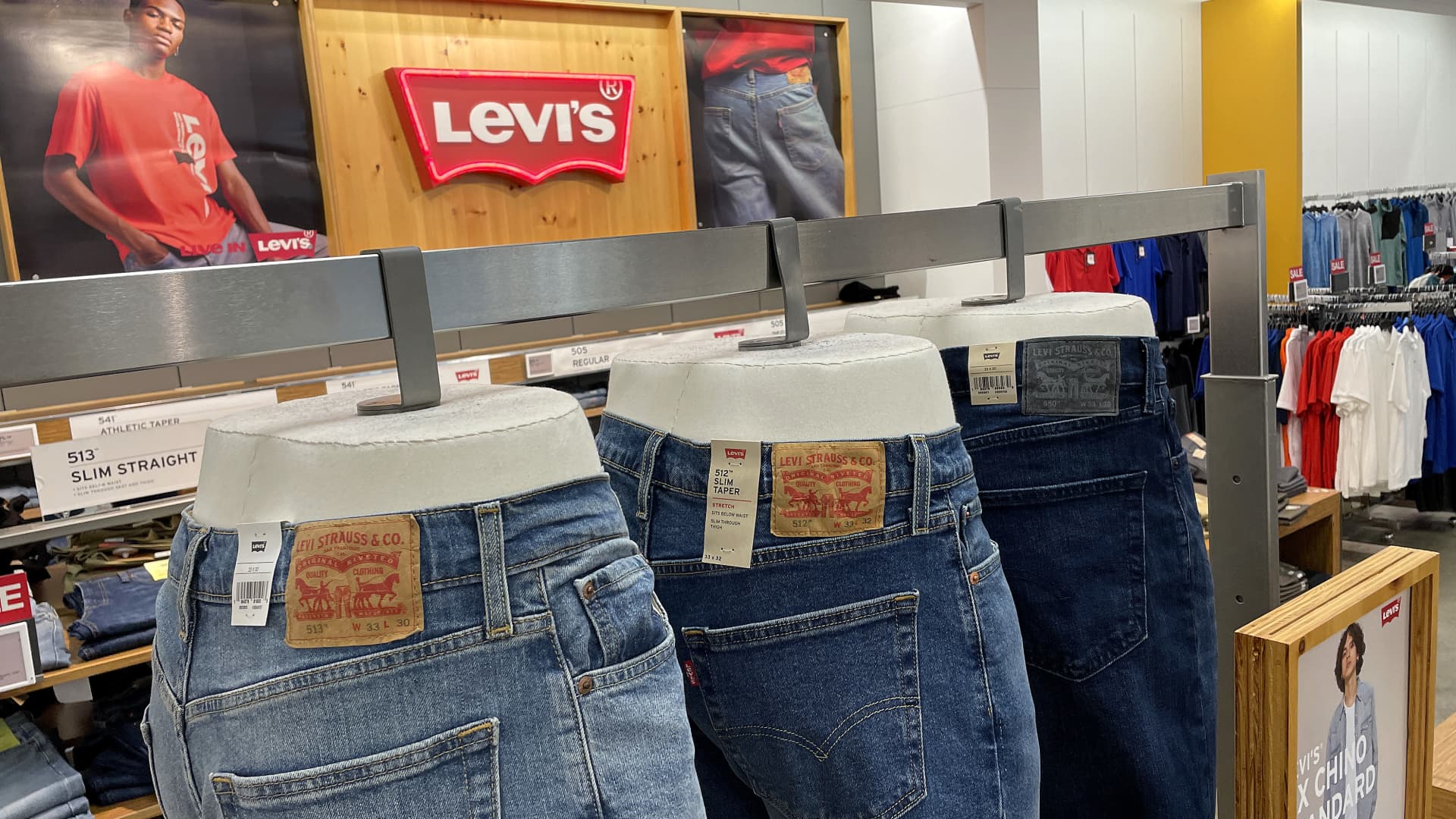Levi Strauss, which has long relied on wholesalers like Macy’s and Kohl’s to drive its business, is now doing nearly half of its sales through its own website and stores, the company said Wednesday when reporting fiscal first quarter earnings.
In the three months ended Feb. 25, direct-to-consumer sales made up a record 48% of overall sales at Levi’s, up from 42% in the year-ago period and 25% higher on a two-year basis, the retailer said.
The shift is a boon for Levi’s profits. But it raises questions about the company’s relationships with its wholesale partners and whether it will hurt those retailers as they grapple with their own existential challenges.
Levi’s also beat Wall Street’s earnings and revenue estimates and raised its full-year guidance. Shares rose as much as 10% in extended trading.
Here’s how the blue jeans maker did in its first fiscal quarter compared with what Wall Street was anticipating, based on a survey of analysts by LSEG, formerly known as Refinitiv:
- Earnings per share: 26 cents adjusted vs. 21 cents expected
- Revenue: $1.56 billion vs. $1.55 billion expected
The company swung to a net loss of $10.6 million, or 3 cents per share, during the quarter, compared with a net income of $114.7 million, or 29 cents per share, in the year-ago period. Excluding one-time costs related to Levi’s restructuring, the company reported earnings per share of 26 cents, ahead of Wall Street’s estimates.
Sales fell to $1.56 billion, down about 8% from $1.69 billion a year earlier. The sales slump was primarily attributed to a shift in Levi’s wholesale orders, which boosted profits by about $100 million in the year-ago period.
Levi’s still expects full-year sales to rise between 1% and 3% as it contends with a slowdown in discretionary spending and an uncertain economy. But it anticipates profits will be higher than it previously thought. The retailer now expects adjusted earnings per share to be between $1.17 and $1.27, up from a previous range of $1.15 to $1.25.
Analysts had expected sales to grow 2.4% on a full year basis and earnings per share of $1.21, according to LSEG.
